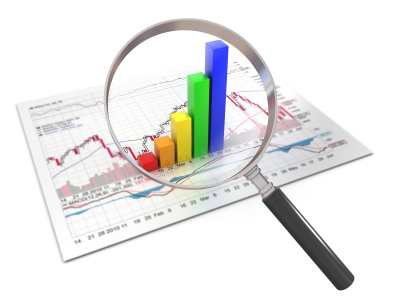By Irana Wasti.
If you’re a leader in an enterprise company or large accounting firm, you wouldn’t make any big decisions without considering the broader budgetary and financial implications for your company. To make sure you’re seeing the full picture, you’d call your Financial Planning and Analysis (FP&A) colleagues and get them to run the numbers. For small businesses, the real picture is very different.
Rami’s story
One of my colleagues, Rami, experienced this firsthand. Rami started his own small business a few years ago, before joining BILL. The business was doing great, but a simple miscalculation in a spreadsheet led to an error in their financial projections. The mistake had a devastating impact on his business and employees. It’s a mistake that could’ve been avoided if they had sophisticated FP&A tools.
It’s not an uncommon mistake among small businesses. For too long, small business owners and their accountants haven’t had access to the tools they need to make informed decisions about their business.
And unlike larger companies, experts in economic modeling and forecasting are not typically available for small business, unless they pay big bucks for outsourced expertise to build those models. Most small businesses simply don’t have the resources to access that expertise.
What FP&A looks like for small businesses now
Before we look at the solution, let’s take a deeper look at the problem.
Many small business owners and their accountants are still dealing with paper. One-person finance departments might spend hours manually running analytics, utilizing massive excel spreadsheets and wasting time cross-referencing disorganized data.
For business owners who don’t have a background in bookkeeping or dealing with numbers, these processes can be error prone and tedious — making their accountant’s job even more difficult. Projections created manually can be disorganized and often don’t give business leaders a full financial picture or scenario planning that they need to do in order to make critical business decisions.
Finance should also be more than just a reactive look at money spent. It can be a strategy for forecasting future scenarios and success goals that provide a valuable roadmap for the future. This is where FP&A tools come into play.
Cash flow management made easier with the right technologies
Fortune 500 companies use an ERP system with a suite of software tools that help with planning, forecasting, budgeting and analysis. Accountants use these tools to provide business leaders with the information they need to make major business decisions, while reporting a holistic view of the overall financial health and performance of the company. So how can small businesses get access to the same kinds of FP&A tools that Fortune 500 companies use?
We’re seeing some innovative companies introducing tools and technologies to help small business owners and their accounting partners with sophisticated budgeting, forecasting and analysis of their finances. The key is getting accurate, real-time data.
For small business owners and their accountants still reliant on manual processes, it’s nearly impossible to create a holistic picture of the financial wellness of the company, without this real-time data. Technology is helping change that.
FP&A tools geared specifically for small businesses are providing them and their accountants with the insights and analytics they need to thrive. These tools provide real-time visibility into cash flow and burn rate, enabling more accurate forecasting that allows small business owners and their accountants to plan for multiple scenarios simultaneously.
Investing in these new tools can take time, but it’s worth it for business owners and accountants who want not only the ‘what’, but also the ‘why’ behind their cash flow, to inform their financial decisions.
What does this mean for accountants?
FP&A tools for small businesses present a great opportunity for accountants to level up their practice offerings and strategic client advisory services. It does this by giving firms and their clients a holistic understanding of their financial position — something that would be very difficult to do with manual processes.
Increasingly, small business owners are looking to their accountants to not only provide a retrospective look at their finances each year. Accountants can also be an incredibly valuable partner for businesses looking for accurate forecasting and strategic advice. For accountants seeking to grow their advisory practices, expanding and strengthening existing client relationships through the addition of higher-value strategic advisory services is key for growth.
Finance departments and accounting firms of the future will be built by harnessing the power of automated technologies that remove the headaches and errors of manual processes, while providing more efficient and strategic insights to better tell the story of the business using accurate and real-time data. For small business owners and accountants alike, seeing the future financial story of their business requires access to sophisticated FP&A tools that provide insights and data that they need to make decisions.
Modeling the future like a Fortune 500 company isn’t outside the realm of possibility for small businesses and their accountants. It just requires the right tools and an accounting partner who paints a picture of the business utilizing the right data and insights. It’s an exciting area of growth – both for small businesses, and accountants.
======
Irana Wasti is the Chief Product Officer of BILL, a leader in financial automation for small and midsize businesses. BILL recently acquired Finmark (from BILL), which gives small businesses greater visibility and control over their cash flow and financial operations.
Thanks for reading CPA Practice Advisor!
Subscribe Already registered? Log In
Need more information? Read the FAQs




